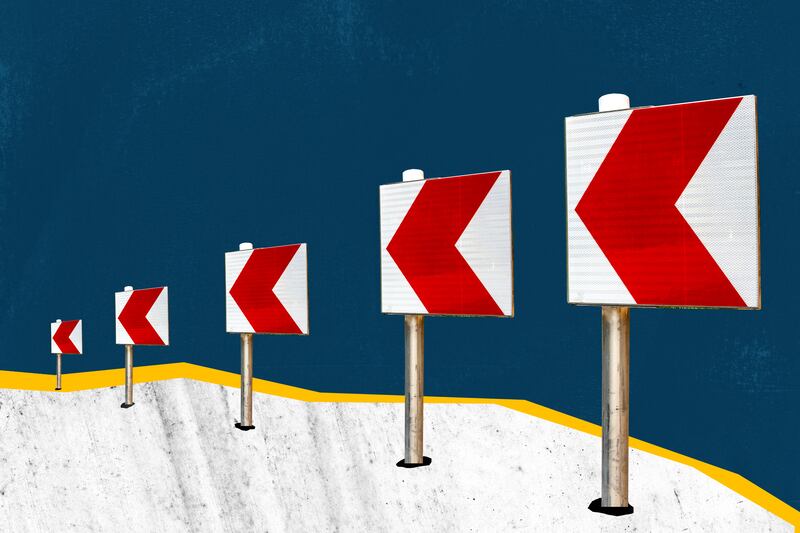New statistics released Thursday by the Centers for Disease Control and Prevention say that the United States has seen an uptick in homicide and suicide death rates among youth and young adults ages 10-24.
Suicide is a leading cause of death for teens in the United States.
Save, an organization dedicated to preventing suicide, reported that each year nearly 800,000 people die by suicide worldwide, which is roughly one death every 40 seconds.
According to the CDC report, in 2021, suicide and homicide were the second and third leading causes of death for children and young adults.
The CDC report found that suicide rates in youth ages 10-14 tripled between 2007 and 2018.
Using data from the CDC, Charlie Health looked at teen suicide rates. The five states with the highest rate of teen suicide as of March 2023:
- Alaska.
- South Dakota.
- Montana.
- New Mexico.
- Colorado.
Alaska had the highest rate of all 50 states, with a total 39.8 deaths per 100,000 youths, while the rate in South Dakota was 33.6.
In a Suicide-Focused Assessment and Treatment Course, co-hosted by McLean Hospital and the Stanford University Department of Psychiatry and Behavioral Sciences, suicidology experts discussed updates in the field of suicide prevention, treatments and affected populations.
Dr. David A. Brent, an M.D. and professor at the University of Pittsburgh, said that young people should be getting screened for suicide risk.
“It’s important to emphasize that asking about suicidal thoughts absolutely does not increase the risk for suicidal behavior. So, there’s no reason not to do it,” Brent said.
There is often a strong association with suicide and depression. For youth especially, there are a lot of pressures surrounding them at such a pivotal time in life.
And although it can be uncomfortable to talk about, experts say asking your child or loved one if they are depressed or have suicidal thoughts can be a step forward in getting sustainable help for them.
The American Academy of Child & Adolescent Psychiatry advised that when we ask questions, “Rather than putting thoughts in your child’s head, asking questions can provide assurance that somebody cares and will give your child the chance to talk about problems.”
The academy added, “Parents, teachers and friends should always err on the side of caution and safety. Any child or adolescent with suicidal thoughts or plans should be evaluated immediately by a trained and qualified mental health professional.”
Although not in the top five, Utah has been ranked high regarding mental health concerns for years. According to the Utah State Board of Education website, “From 2011 to 2015, Utah saw a 141% increase in suicides among youth ages 10-17, compared to an increase of 23.5% nationally.”
Earlier this month, the the board approved a new screening tool designed to find anxiety-related emotional disorders in children that aligns with the Utah code. This is just one resource the Utah State Board of Education is implementing to help the mental health concerns in schools.
Sharon Turner, the board’s director of public affairs, told the Deseret News, “Our resources are helpful because we have options for both prevention and coping. These resources focus on recognizing signs and connecting students with organizations and nonprofits with additional expertise (such as the Jason Foundation). ... We also have resources specifically designed for teachers and schools, parents and students.”
The CDC reported that in 2021, suicide rates were higher than homicide rates for people ages 10-14 and 20-24, but for people ages 15-19, the homicide rate was higher.
Worldwide, close to 200,000 youth and young adults ages 10-29 die by homicide every year, making up 42% of the total homicides, per the World Health Organization.
In the case of both suicide and homicide, even higher numbers survive, with injuries.
Nine out of 10 people who do survive suicide will not die from suicide later in life, per Harvard School of Public Health.
Episodes of suicidal thoughts can often be short-lived. Adolescents frequently grapple with feelings of sadness and loneliness, and it’s vital for them to acquire coping strategies to navigate these challenging times.
But experts like Turner emphasize the importance of intervening when crisis seems likely.
“The transition from suicidal thoughts to an attempt is difficult to predict and suicidal crises escalate quickly,” Turner said.
Suicide prevention resources
If you or someone you know struggles with thoughts of suicide, call the suicide prevention hotline at 988.
Online resources
- NAMI Utah: namiut.org.
- American Foundation for Suicide Prevention: afsp.org.
- Suicide & Crisis Lifeline: 988lifeline.org.


